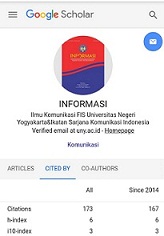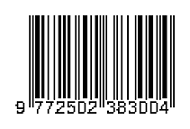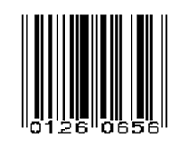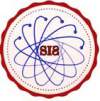Gender equality discourse in islamic online media in social and contemporary history, 2000-2021
DOI:
https://doi.org/10.21831/informasi.v53i2.61630Keywords:
Suara "˜Aisyiyah, online media, gender discourse, woman organizationAbstract
The article examine gender discourse channelled through Suara Aisyiyah magazine, part of Aisiyah, woman organization, with a gender perspective discoursed through online media. However, representations of gender discourse vary in different spaces and times, as well as different agents and contexts. Likewise with ways to channel ideas about gender that are part of the organization's vision. To capture the transformation of gender discourse with online media, this study uses a historical approach with discourse analysis. Discourse analysis method to describe text and context will be used in data analysis. The periodization which is the starting point of this research is 2000-2021 (contemporary period). The digital platform is used to more broadly discuss the progressive Islamic identity that is carried by Suara "˜Aisyiyah, in that period. As we understand, online media has carried many identities, thus allowing "crossing" and "collision". The various discourses raised by the Suara "˜Aisyiyah print newspaper clearly show the vision of the "˜Aisyiyah and Muhammadiyah organizations, such as the position of women in politics and women's access to health and nutrition. Through preaching on social media, the spirit of equality was built by "˜Aisyiyah in all walks of life, such as by promoting the Elimination of Domestic Violence.
References
Asnawi, H. S. (2012). Politik hukum kesetaraan kaum perempuan dalam organisasi masyarakat Islam di Indonesia. Musí£wa Jurnal Studi Gender Dan Islam, 11(1), 67-84.
Astuti, D. (2021). Menakar fungsi organisasi perempuan dalam persepektif kesetaraan gender. Jurnal Pendidikan Ilmu Pengetahuan Sosial (JPIPS), 13(1), 42-51.
Badara, A. (2012). Analisis wacana: Teori, metode, dan penerapannya pada wacana media. Kencana.
Biscop, K., Malliet, S., & Dhoest, A. (2019). Subversive ludic performance: An analysis of gender and sexuality performance in digital games. DiGeSt. Journal of Diversity and Gender Studies, 6(2), 23-42. https://doi.org/10.11116/digest.6.2.2
Caldeira, S. P., De Ridder, S., & Van Bauwel, S. (2018). Exploring the politics of gender representation on Instagram: Self-representations of femininity. DiGeSt. Journal of Diversity and Gender Studies, 5(1), 23-42. https://doi.org/10.11116/digest.5.1.2
Daud, F. K. (2020). Feminisme Islam di Indonesia: Antara gerakan modernisme pemikiran Islam dan gerakan perjuangan isu gender. Jurnal Harkat: Media Komunikasi Gender, 16 (2). 102-116. DOI: 10.15408/harkat.v16i2.17572
Gustin Juna, Lewat ICAS 2020, "˜Aisyiyah Bangun Sistem Pengetahuan Umat. 3 Oktober 2020, https://suaraaisyiyah.id/lewat-icas-2020-aisyiyah-bangun-sistem-pengetahuan-umat/. Accessed 1 June 2022.
Kuntowijoyo. (2013). Pengantar ilmu sejarah. Tiara Wacana.
Miller, K. (2015). Organizational communication: Approaches and processes, seventh edition. Cengage Learning.
Morissan. (2020). Komunikasi organisasi. Prenadamedia Group.
Patton, C. V. (1983). Five titles on policy analysis. Journal of Planning Education and Research, 2(2), 130-133. https://doi.org/10.1177/0739456X8300200209
Silviani, I. (2020). Komunikasi organisasi. Scopindo Media Pustaka.
Sirajuddin, "ICAS 2020 : Menyiapkan Generasi Muda "˜Aisyiyah yang Tangguh", 4 Oktober 2020, https://suaraaisyiyah.id/icas-2020-menyiapkan-generasi-muda-aisyiyah-yang-tangguh. Accessed 1 June 2022.
Sjamsudin, H. S. (2020). Metodologi sejarah. Ombak.
Sugiyono. (2005). Memahami penelitian kualitatif. CV. Alfabeta.
Yuliantri, R. D. A. (2008). Seabad pers perempuan: bahasa ibu, bahasa bangsa. I: boekoe.
Downloads
Published
How to Cite
Issue
Section
Citation Check
License
Authors who publish with this journal agree to the following terms:
- Authors retain copyright and grant the journal right of first publication with the work simultaneously licensed under a Creative Commons Attribution License that allows others to share the work with an acknowledgement of the work's authorship and initial publication in this journal.
- Authors are able to enter into separate, additional contractual arrangements for the non-exclusive distribution of the journal's published version of the work (e.g., post it to an institutional repository or publish it in a book), with an acknowledgement of its initial publication in this journal.
- Authors are permitted and encouraged to post their work online (e.g., in institutional repositories or on their website) prior to and during the submission process, as it can lead to productive exchanges, as well as earlier and greater citation of published work (See The Effect of Open Access).























